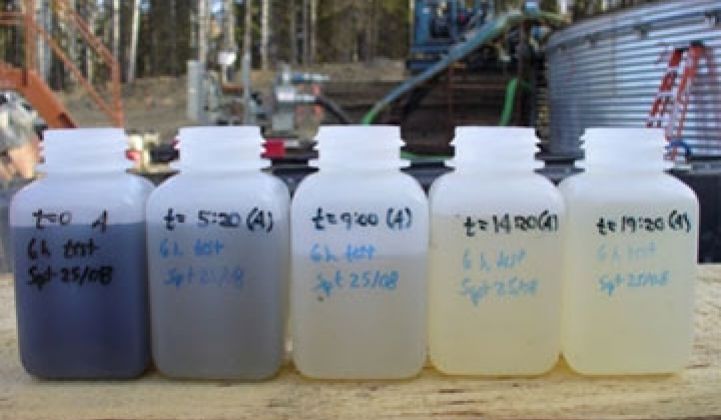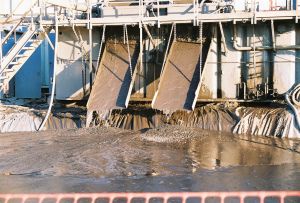When the Massey coal mine exploded last month, other mines continued to produce. When an oil platform in the Gulf of Mexico exploded a few weeks ago, other platforms kept pumping. The natural gas industry has weathered its own tragedies, as it will in the future.
Until renewable and sustainable energy sources enter mass production, citizens in the developed world will ensure that demand for carbon-based energy remains steady. And so long as demand for carbon-based energy exists, there will be an industry devoted to treating the water produced during energy exploration and extraction.
The term 'produced water' refers to effluents that rise to the surface during energy drilling or extraction. This includes water naturally occurring alongside energy deposits, as well as water injected into the ground during a drilling process called 'hydraulic fracturing.'
Current energy exploration and extraction in the United States creates 15-20 billion barrels of produced water each year. Worldwide, estimates top 50 billion barrels. According to the U.S. Department of Energy, for every barrel of oil produced globally, an average of three barrels of water are produced. In the United States, the water to oil / gas ratio (WOR) averages seven barrels of water to one of oil. In the worst cases, the WOR reaches 50 to 1. Energy companies pay between $3 – $12 to dispose of each barrel of produced water.
That’s a lot of water to clean -- and a steep premium to pay. Further, traditional practices face increased opposition by environmentalists, local and state governments, and public lawsuits that allege produced water is escaping containment pits and entering streams and ground water.
Traditionally, produced water is stored temporarily in containment pits. It is then handled one of two ways: either trucks haul the water to treatment facilities or the water is evaporated in pits and then the dry dregs are trucked to landfills or designated dumping sites.
During hydraulic fracturing, a line of trucks brings clean water to use in the fracturing procedure. After the fracture is complete, another line of trucks hauls the contaminated water to treatment facilities. Hauling water to the site just to haul more water out later is inherently inefficient compared to methods that promise to keep the entire treatment process on-site.
A number of companies are announcing new technologies to mitigate the costs, inefficiencies and risks associated with open treatment pits and hauling toxic water via trucks.
The technologies, including forward osmosis and self-contained evaporation, are intended to please energy companies and the public alike: energy companies win because water is treated on-site, saving on transportation costs. The public and the environment win because water emerges from treatment clean and reusable (some is so clean it can be reintroduced into the rivers from which it was extracted).
These technologies, each already producing profits, make environmentally sound water treatment affordable for energy companies faced with narrowing margins.
Companies like 212 Resources, Hydration Technology Innovations, Ecosphere Technologies and Aqua-Pure Ventures are entering an expanding market at the perfect time: last year, legislation entered in the House and Senate to cancel the energy industry’s exemption from the Clean Water Act. If the legislation becomes law, energy companies will face heightened standards of water treatment -- and they’ll likely be required to retire traditional containment pits in favor of new, self-contained, on-site water treatment.
The current market for treating produced water is estimated to exceed $4.3 billion for the next five years, and that market will expand whether or not regulations increase.
The public thirsts for energy. Until alternative energy sources enter the mainstream over the next few decades, energy exploration and hydraulic fracturing will continue, and as long as they continue, they will contribute to the growth of the produced water industry.
***
This post comes from the BlueTech Blog, an open forum for discussion on water issues sponsored by the Artemis Project. Artemis will announce its list of the top 50 water companies at its BlueTech Innovation Forum June 8 in San Francisco. (Disclosure, I'm participating. Water is one of the biggest issues out there.)





